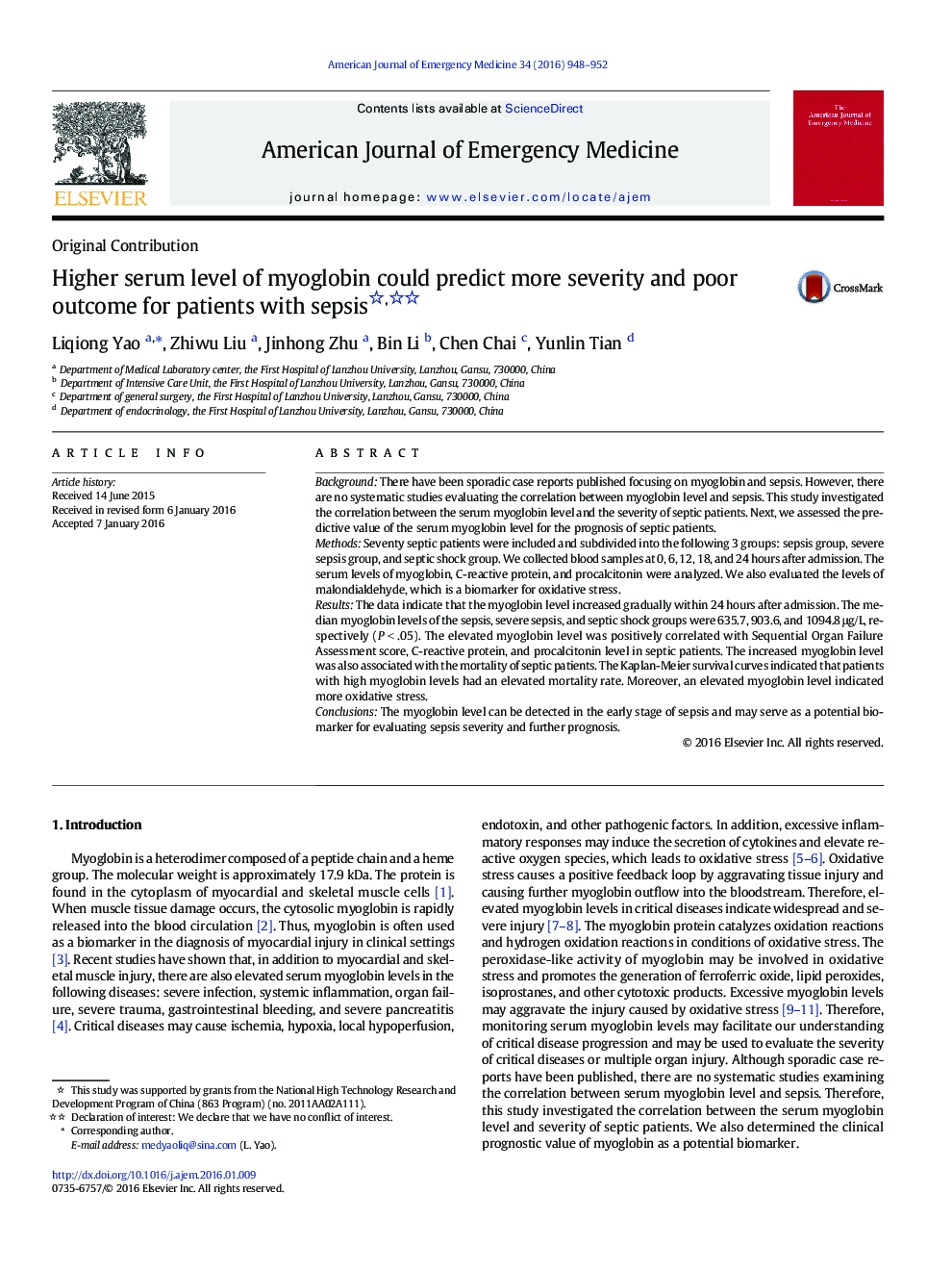| کد مقاله | کد نشریه | سال انتشار | مقاله انگلیسی | نسخه تمام متن |
|---|---|---|---|---|
| 3223104 | 1588093 | 2016 | 5 صفحه PDF | دانلود رایگان |
BackgroundThere have been sporadic case reports published focusing on myoglobin and sepsis. However, there are no systematic studies evaluating the correlation between myoglobin level and sepsis. This study investigated the correlation between the serum myoglobin level and the severity of septic patients. Next, we assessed the predictive value of the serum myoglobin level for the prognosis of septic patients.MethodsSeventy septic patients were included and subdivided into the following 3 groups: sepsis group, severe sepsis group, and septic shock group. We collected blood samples at 0, 6, 12, 18, and 24 hours after admission. The serum levels of myoglobin, C-reactive protein, and procalcitonin were analyzed. We also evaluated the levels of malondialdehyde, which is a biomarker for oxidative stress.ResultsThe data indicate that the myoglobin level increased gradually within 24 hours after admission. The median myoglobin levels of the sepsis, severe sepsis, and septic shock groups were 635.7, 903.6, and 1094.8 μg/L, respectively (P < .05). The elevated myoglobin level was positively correlated with Sequential Organ Failure Assessment score, C-reactive protein, and procalcitonin level in septic patients. The increased myoglobin level was also associated with the mortality of septic patients. The Kaplan-Meier survival curves indicated that patients with high myoglobin levels had an elevated mortality rate. Moreover, an elevated myoglobin level indicated more oxidative stress.ConclusionsThe myoglobin level can be detected in the early stage of sepsis and may serve as a potential biomarker for evaluating sepsis severity and further prognosis.
Journal: The American Journal of Emergency Medicine - Volume 34, Issue 6, June 2016, Pages 948–952
